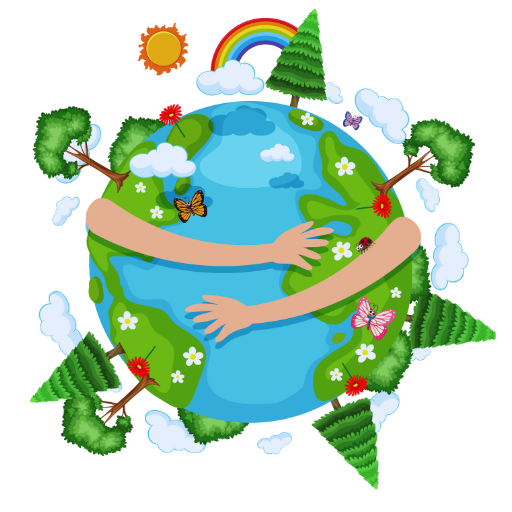An Ultimate Guide to Sustainable Energy
Welcome to the world where sunshine becomes electricity, gentle breezes spin turbines, and the Earth’s own heat warms our homes. This isn’t science fiction; it’s the future of sustainable energy.

Why sustainable energy matters?
Sustainable energy matters because our current reliance on fossil fuels is a ticking time bomb. They pollute the air we breathe, contribute to climate change, and are a finite resource. Sustainable energy means using energy sources that won’t run out and don’t harm the environment. Sources like :- Solar, Wind power, Hydropower, Geothermal, Bioenergy, Marine energy are long-lasting renewable energy that is safe and healthy for the planet.
Here’s a stat to chew on: According to the International Renewable Energy Agency (IRENA), the renewable energy sector employed over 12 million people globally in 2021. That’s a lot of green jobs being created!
Table of Contents
With sustainable mindset, Every action matters! Check our recent blog post on (sustainable) Party Ideas, Technology , City , Trends, Tips too!
Types of sustainable energy
Renewable energy sources come in various forms, each with unique advantages and disadvantages :-
Solar Power
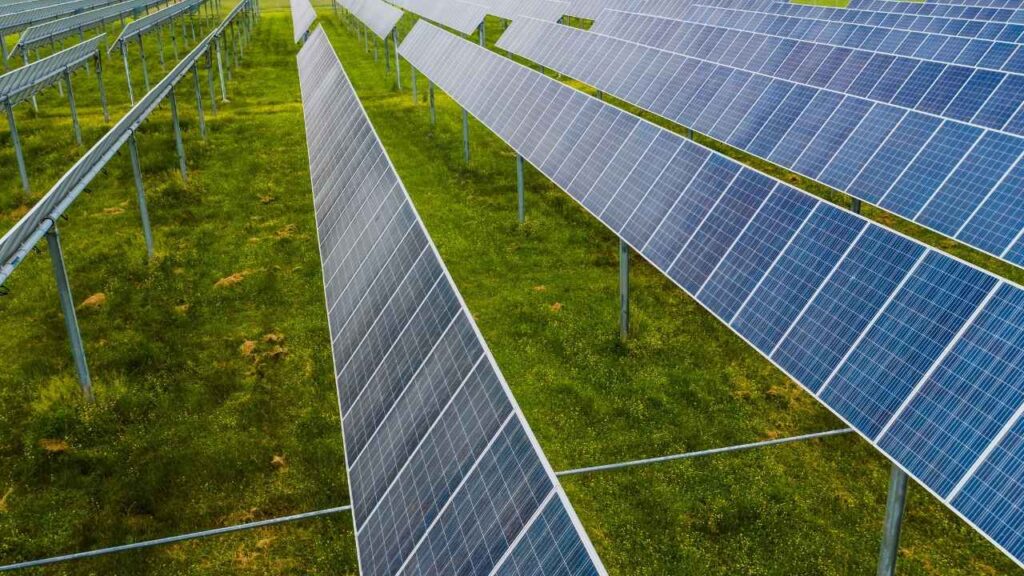
Solar power is a clean and abundant renewable energy source that harnesses the sun’s energy. It can be transformed into either heat or electricity, making it a versatile resource. Did you know the earth receives more than 10,000 times the energy it uses from the sun each year? Source – National Oceanic and Atmospheric Administration That’s a lot of potential power!
How does solar power work?
Solar panels act like little factories that convert sunlight into electricity. When sunlight hits the panels, it creates an electric current. This direct current (DC) electricity needs a converter to be usable in our homes and appliances, which is why inverters are used to change it to alternating current (AC).
What is the benefit of solar power?
1. Solar energy has a much lower carbon footprint than traditional energy sources. It doesn’t pollute the air or water!
2. Not only is sunlight free, but solar panels require less maintenance than other energy sources.
3. You can save money on your electricity bills.
What are challenges of solar power?
1. Installing solar panels can be expensive initially.
2. Solar panels only work during daylight hours and may be less effective in cloudy or snowy weather.
Wind Power
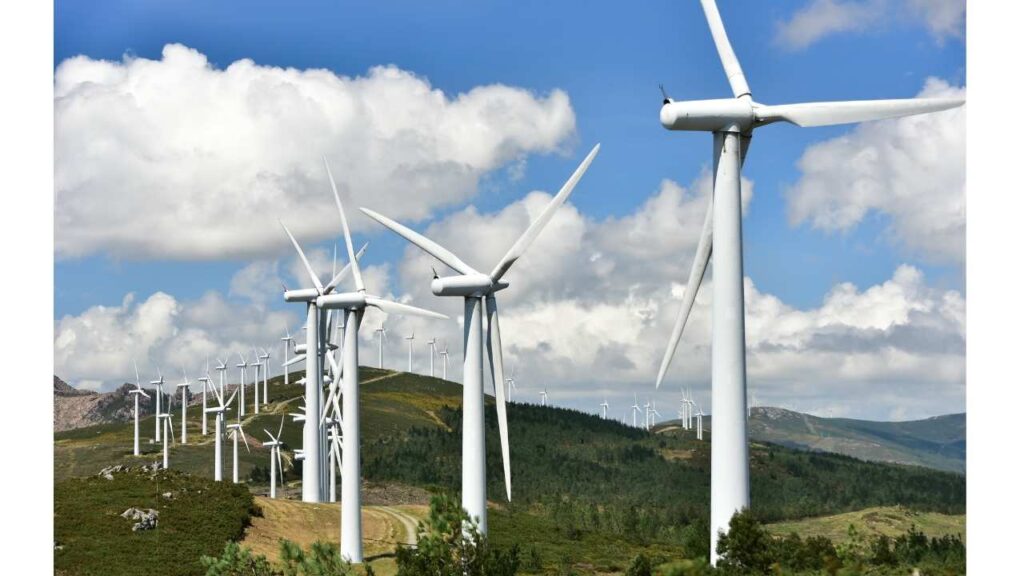
Wind power, or wind energy, is a form of renewable energy that harnesses the power of the wind to generate electricity. It utilizes wind turbines to convert the turning motion of blades, pushed by moving air (kinetic energy), into electrical energy (electricity). Wind power generation increased by a record 265 TWh (14%) in 2022, making it the second-highest growing renewable power source behind solar PV according to IEA wind electricity
How does wind power work?
Wind acts like a strong breeze, pushing the turbine’s blades which are designed to catch wind efficiently then The spinning blades turn a shaft, like a spinning axle. This rotation captures the wind’s kinetic energy (the energy of movement). The shaft is connected to a generator, which is basically a machine that converts that spinning motion into electricity. Just like solar panels, wind turbines produce direct current (DC) electricity. This needs to be converted to alternating current (AC) for our homes, and that’s where inverters come in!
What are the benefits of wind power?
1. Wind is present almost everywhere on Earth, and we can predict where it blows strongest. This predictability allows for strategic placement of wind farms, maximizing energy production and cost-effectiveness.
2. Unlike geothermal or hydroelectric, wind power can be harnessed even in remote locations through micro-grid solutions.
3. Modern wind turbines convert wind energy into electricity with impressive efficiency – reaching 40-50%, close to the theoretical maximum!
4. Those tall blades might seem like space hogs, but they have a tiny footprint compared to their energy output. And, because they extend vertically, land beneath wind turbines can still be used for agriculture or grazing.
What are challenges of wind power?
1. Wind isn’t always blowing. This means that wind turbines can’t constantly generate electricity, unlike a coal or nuclear power plant. This intermittency can make it difficult to rely solely on wind power to meet energy demands.
2. Wind turbines can pose a threat to birds and bats, which can collide with the blades. Careful planning of wind farm locations can help mitigate this risk.
3. While the cost of wind power has come down significantly in recent years, building and maintaining wind farms can still be expensive. The initial investment for large turbines and the ongoing maintenance are key factors.
Hydropower
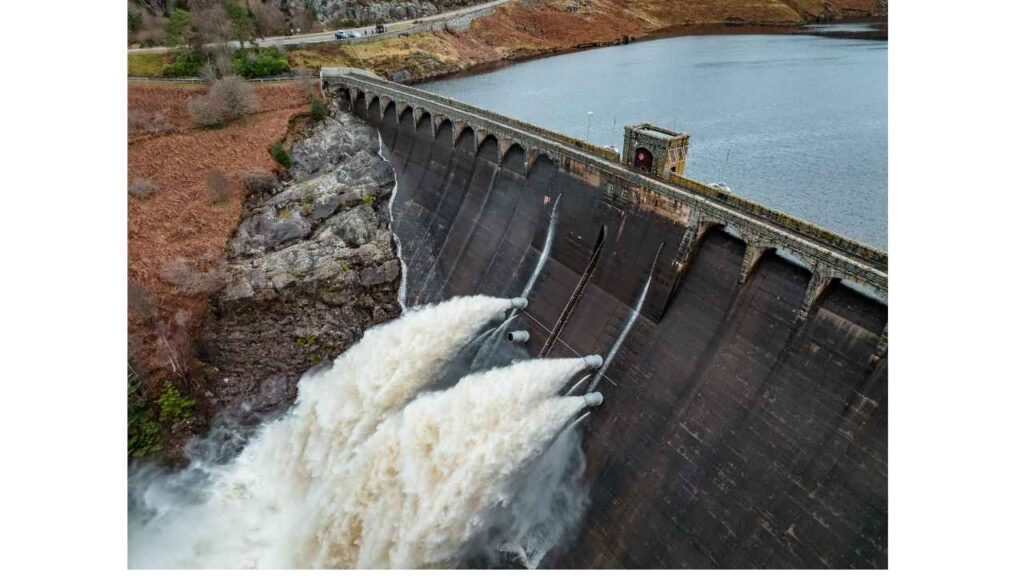
Hydropower is a method of producing electricity by utilizing the energy from flowing water. It has been used for a long time and is considered one of the largest and most ancient forms of renewable energy worldwide.
Did You Know? 202 BC – 9 AD (China) – The first known use of hydropower comes from China’s Han Dynasty. Trip hammers powered by vertical water wheels were used for grain processing, ore crushing, and even early papermaking.
Hydropower is the leading renewable energy source. It generates more electricity than all other renewables combined, exceeding 4,300 terawatt-hours (TWh) in 2022, According to International Energy Agency That’s one and a half times the entire electricity consumption of the European Union!
How does hydropower work?
Water that is in motion, typically from a river or a lake at a higher elevation, possesses potential energy because of its height or the force of its movement. To regulate this water flow, dams or diversion structures are constructed. These dams create a reservoir that functions as a large storage unit for the water. The water is directed through pipes called penstocks towards turbines.
The force of the fast-moving water pushes against the blades of the turbine, causing them to spin. The spinning turbine shaft is connected to a generator, which transforms the mechanical energy into electricity. This electricity is then supplied to the power grid and distributed to homes and businesses.
What are the benefits of hydropower?
1. Hydropower is a clean energy source because it generates electricity without emitting greenhouse gasses or pollutants.
2. Hydropower plants can adjust their electricity output depending on demand. Unlike solar or wind power, which rely on weather conditions, hydropower can be ramped up or down quickly to meet energy needs, making it a reliable source of electricity.
3. Once a hydropower plant is constructed, the fuel source (water) is free, leading to low operating costs. Hydropower generation is generally inexpensive compared to other sources of energy.
What are the challenges of hydropower?
1. Building large-scale dams and hydroelectric plants requires significant upfront investment in materials, construction, and labor. This can be a hurdle, especially for developing countries.
2. Dams can disrupt ecosystems by displacing wildlife, altering water flow patterns, and impacting fish migration. Flooding large areas to create reservoirs can destroy habitats and displace people.
3. Suitable locations for hydropower plants depend on factors like reliable rainfall, sufficient water flow, and appropriate topography for dam construction. These factors can limit where hydropower can be viably used.
Geo Thermal
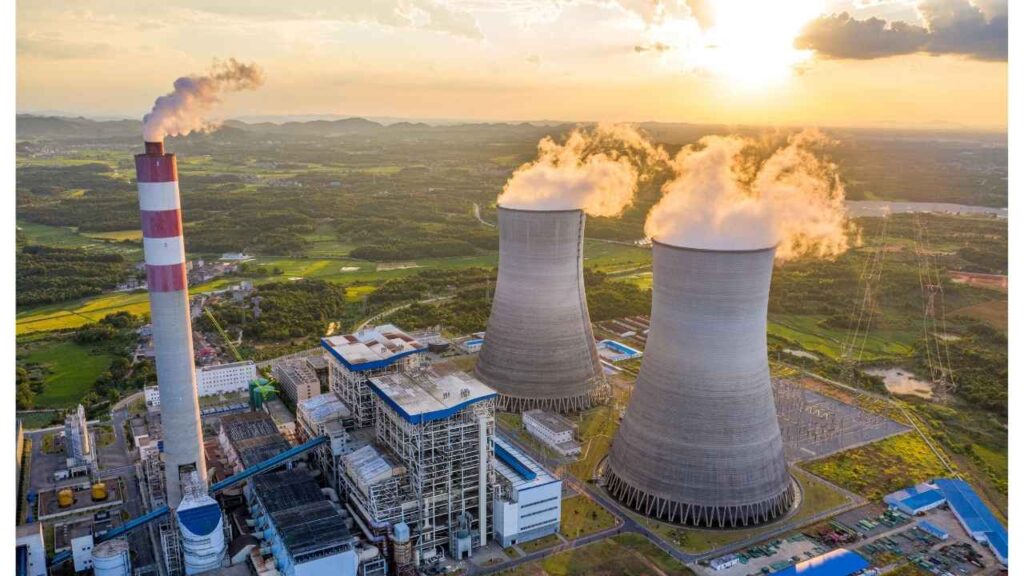
Geothermal energy is like a giant natural furnace inside the Earth, constantly generating heat! This heat can be harnessed for a variety of purposes, from warming buildings to generating electricity.
In 2021, geothermal plants generated about 92 billion kilowatt-hours (kWh) of electricity globally, The United States boasts the highest cumulative installed geothermal capacity globally, though its contribution to total electricity generation remains modest at around 0.4% (17 billion kWh) in 2022
How does geothermal work?
There are two main applications of geothermal energy :-
Geo Thermal Heat Pumps
These systems utilize the constant underground temperature (which remains stable year-round) for efficient heating and cooling of buildings. A network of pipes (called a geothermal loop) is buried underground. A water-based solution circulates through the loop, absorbing heat from the earth in the winter and rejecting heat back into the earth in the summer. A heat pump acts like a refrigerator, using electricity to move the heat from the loop to your home for heating or vice versa for cooling.
Geo Thermal Power Plants
These facilities target areas with naturally occurring hot water or steam underground (geothermal reservoirs). Wells are drilled to access these reservoirs. The hot water or steam rises to the surface due to pressure, driving turbines to generate electricity. In some cases, cooler water is injected back into the reservoir to maintain pressure and ensure long-term sustainability.
What are the benefits of geothermal?
1. Geothermal energy offers a clean and renewable alternative to fossil fuels.
2. GHPs are highly efficient, resulting in significant energy cost savings for buildings.
3. Geothermal power plants have minimal air or water emissions.
What are the challenges of geothermal?
1. Geothermal resources are not evenly distributed everywhere.
2. Upfront installation costs for geothermal heat pumps can be higher than conventional systems.
3. Drilling for geothermal power plants can have some environmental impact.
Biomass Energy
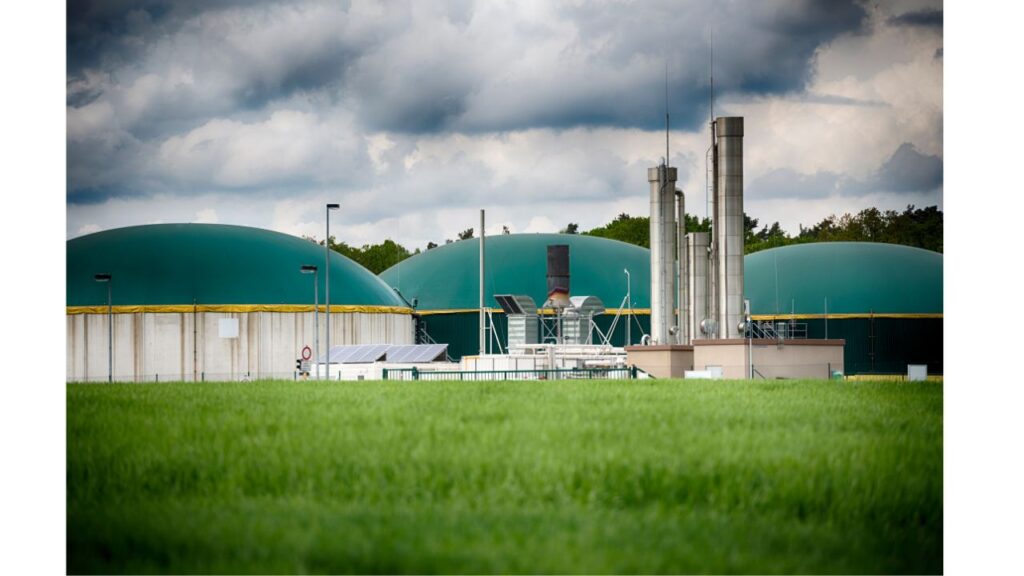
Biomass has been a reliable energy source for centuries, from cozy campfires to modern power plants. But is it a sustainable solution for the future? Let’s break it down :-
What is biomass?
Biomass energy is created by using wood, crops, or leftovers from agriculture and industry to produce electricity, fuels, and everyday products.
Did You Know? – Biomass is the fourth-largest source of global energy, accounting for roughly 6% of total energy consumption (as of 2020). Source – World bioenergy statistics.
Here are some of the common sources :-
- Wood: Still the king of biomass, wood provides heat and electricity in many parts of the world.
- Food crops: Corn is a common source of ethanol, a biofuel for vehicles.
- Grasses and Woody Plants: Switchgrass and other fast-growing plants hold promise for future biofuels.
- Agricultural/Forestry Residues: Leftover straw, stalks, and sawdust can be converted into energy instead of being wasted.
- Municipal and Industrial Waste: Even food scraps and landfill gases can be harnessed for biomass power!
What are the benefits of biomass?
1. While burning biomass releases CO2, plants capture CO2 as they grow, potentially creating a balanced cycle (depending on how the biomass is grown and processed).
2. Biofuels offer a domestic alternative to imported oil, boosting energy independence.
3. Growing and processing biomass fuels creates jobs and strengthens these industries.
What are the challenges of biomass?
1. Cutting down trees for biomass can actually increase carbon emissions in the short term. Sustainable practices are crucial.
2. Growing crops for biofuels could compete with food production for land.
3. Improper biomass burning can release pollutants.
Top Countries & Companies promoting Sustainable Energy
The fight against climate change demands innovative solutions, and in the realm of energy production, a shift towards renewable sources is paramount. Several countries are leading the charge, demonstrating the feasibility and effectiveness of sustainable energy strategies.
Let’s explore the impressive achievements of Costa Rica, Iceland, and Denmark, each with their unique approach to powering a greener future.
Costa Rica

Costa Rica, a tiny country in Central America, has emerged as a top player in renewable energy worldwide. Since 2022, they have consistently generated 98% of their electricity from renewable sources, including hydro, geothermal, wind, biomass, and solar power. Their National Decarbonization Plan aims to achieve complete carbon neutrality by 2050.
Iceland

Iceland, a volcanic island nation, relies on geothermal resources for more than 90% of its electricity production. Additionally, the country utilizes hydropower to fulfill its remaining energy requirements. Iceland’s vast natural resources showcase a successful shift towards sustainable energy practices.
Denmark

Denmark is at the forefront of wind energy technology, aiming to produce all its electricity from renewable sources by 2050. The country has focused on offshore wind farms as a key source of clean energy.
Tesla Powerwall
Tesla Powerwall – This home battery system allows homeowners to store solar energy generated during the day and use it at night. Imagine powering your entire house from the sun!
NextEra Energy
NextEra Energy (NEE) is the world’s largest producer of wind and solar energy, with a capacity of over 30,000 megawatts. They are also investing heavily in battery storage and other renewable energy technologies.
Iberdrola
Iberdrola (IBE) is a Spanish multinational electric utility company that is a global leader in renewable energy. They have a significant presence in wind and solar power, as well as hydroelectric and nuclear power.
Overall Challenge of Sustainable Energy
Achieving a sustainable energy future comes with its fair share of obstacles. Let’s take a look at a few challenges that we must tackle along the way.

Storage
Solar and wind power are great for cutting down on fossil fuels, but they have a downside: they’re not always available. The sun doesn’t shine 24/7 and the wind isn’t always blowing, so they can’t generate energy all the time like coal or natural gas.
Challenges include cost and long-term storage, but advancements are happening fast, paving the way for a clean and reliable energy future.
Infrastructure
- Lack of smart grid technology to optimize energy flow and integrate renewables effectively.
- Limited investment in research and development for next-generation energy storage solutions.
- Regulatory hurdles and permitting processes that can slow down infrastructure development for renewables.
Investing in modernizing and expanding energy infrastructure is essential for overcoming these challenges and achieving a sustainable energy future.
Public Perception
Research indicates that the public has a favorable view of renewable energy sources. Solar, wind, and other sustainable options are acknowledged for their positive impact on the environment.
- Public understanding of how renewable energy works and the challenges of storage can be limited. This can lead to skepticism about their reliability compared to traditional power sources.
- There’s a perception that renewable energy is more expensive, though advancements are bringing down costs.
- While people support renewable energy in principle, local projects like wind farms can face opposition due to concerns about aesthetics, noise, or potential impact on property values.
Public perception can be a hurdle, but education and clear communication about the benefits and realities of sustainable energy are key. As people become more informed and storage solutions improve, public acceptance is likely to grow.
Possibilities of Sustainable Energy
Although there are many obstacles to overcome, the potential for a sustainable energy future is enormous. Let’s take a sneak peek into what lies ahead :-
Reduced Carbon Footprint & Statistics

Sustainable energy can go beyond electricity generation. Biofuels made from sustainable sources can power vehicles, and geothermal energy can provide heating and cooling, further reducing reliance on fossil fuels and their emissions.
- A 2023 study by the National Renewable Energy Laboratory (NREL) in the US found that installing solar panels on just a fraction of suitable rooftops in the country could offset 27% of current electricity generation from fossil fuels.
- The American Wind Energy Association reports that wind power in the US avoided 380 million metric tons of carbon dioxide emissions in 2022, equivalent to taking 83 million cars off the road.
Energy Independence

Energy Independence :- Traditionally, energy independence refers to a nation or region producing all the energy it consumes, reducing reliance on foreign imports. This concept is being re-evaluated for a few reasons:
- Globalized Economy: Modern economies are highly interconnected. Importing resources like certain minerals crucial for renewable technologies can still be beneficial.
- Geopolitical Security: Diversifying energy sources, even if some are imported, can lessen vulnerability to price fluctuations or supply disruptions from a single source.
How sustainable energy can help countries achieve independence?
1. Reduced Reliance on Volatile Fossil Fuel Markets: By generating their own clean energy, countries become less susceptible to price hikes or supply disruptions from fossil fuel exporters.
2. Enhanced Energy Security: A diverse renewable energy mix reduces dependence on any single source, both domestic or foreign.
Innovation

Sustainable energy has the potential to completely transform the way we generate power, leading to an exciting era of innovation. Let’s explore how this could happen.
Efficiency Gain
- Smarter Grids: AI can optimize power distribution, cutting energy losses and boosting overall grid efficiency. Studies suggest reductions of 10-15% in energy consumption [source needed].
- Energy-Efficient Materials: New materials with improved conductivity and insulation could significantly reduce energy waste during transmission and use.
Emerging Technologies
- Fusion Power: Imagine clean energy with the power of 10 suns! Fusion, if achieved, could be a game-changer.
- Hydrogen Cars: Imagine pollution-free driving! Advancements in hydrogen technology could make it a reality, with cars that run as far as gasoline ones.
More Renewables, New Resources
- Solar & Wind Power Boost: Better storage (batteries, pumped hydro) and smarter grids could allow for way more renewable energy use.
- Next-Gen Powerhouses: Innovations in geothermal, tidal, and wave energy could tap vast clean energy sources. Enhanced geothermal systems alone could meet 20% of global electricity demand! Source – International Geothermal Association (IGA)
Conclusion
Thank You for reading till the end. In This blog, We explored the world of sustainable energy, diving into why it matters (combating climate change and creating green jobs) and the different sources like solar, wind, hydro, geothermal, and biomass. We also discussed the challenges of storage and infrastructure, along with the exciting possibilities for a cleaner, more secure energy future!

Let’s keep the conversation going – share your thoughts and ideas in the comments below 🙂
If you have any further queries in this topic, You can Email us at contact@wecareearth.com. Thank You for being eco conscious! We warmly welcome you at wecareearth.com |
